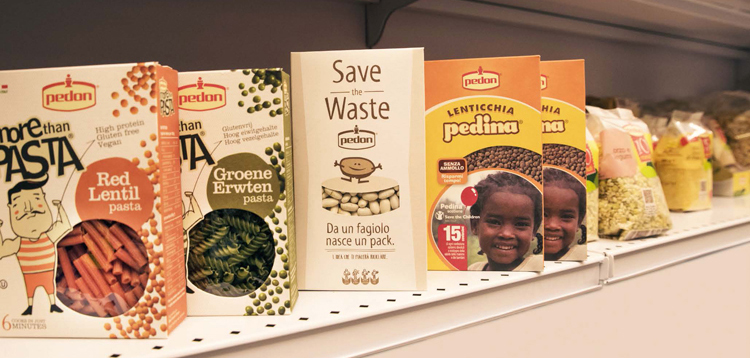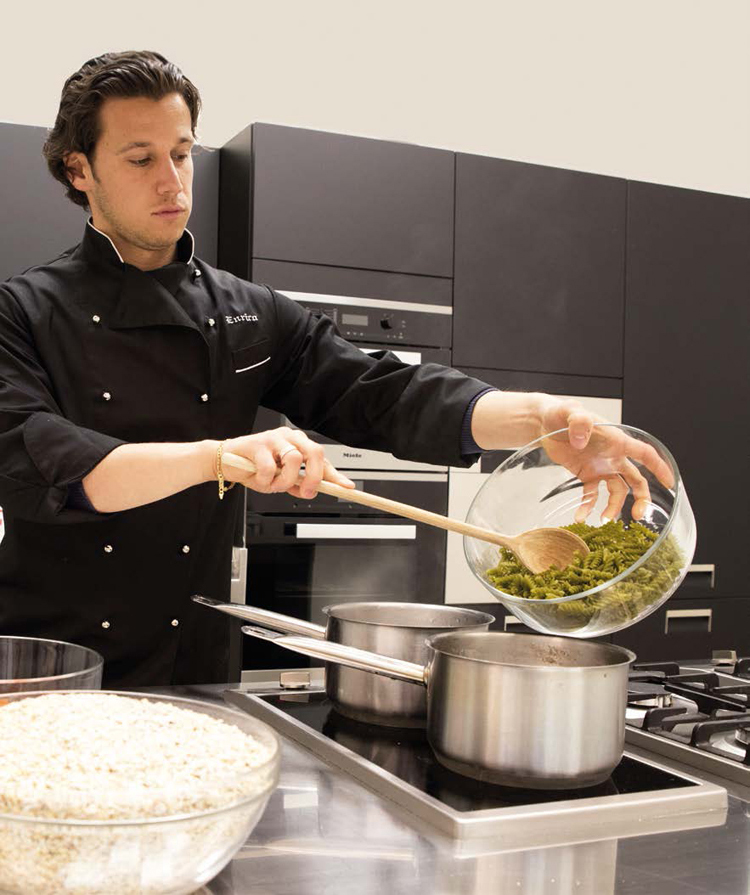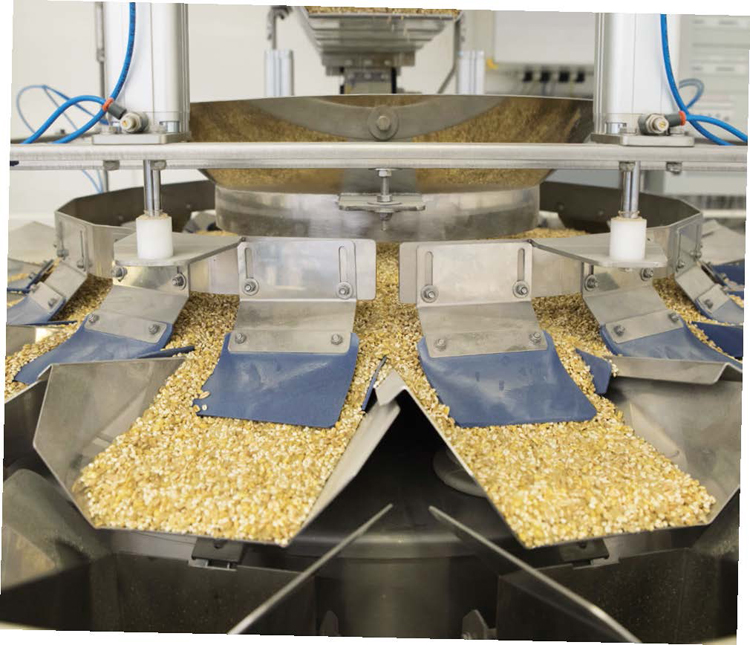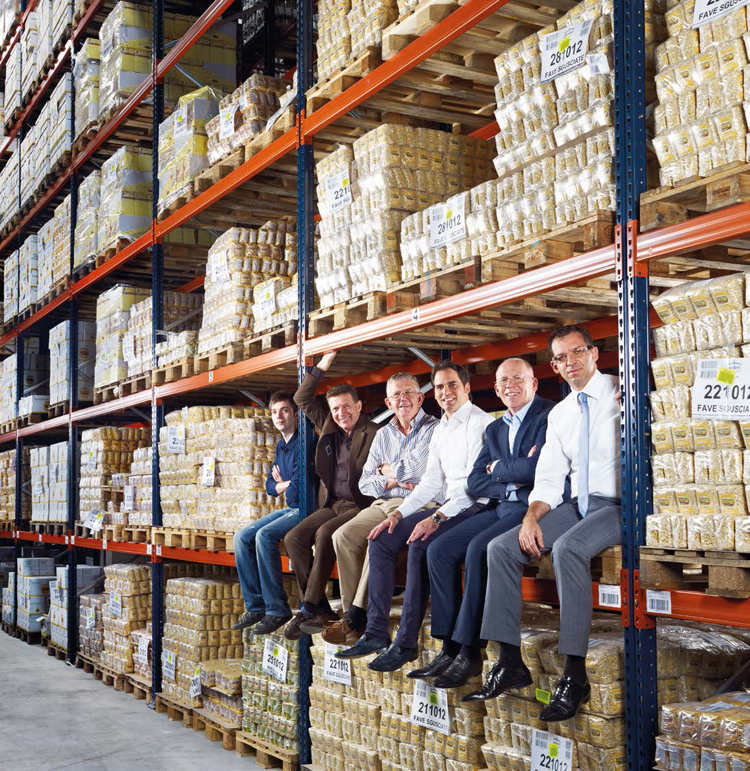Intersecting production chains. This could be the key element of the circular economy where the stark difference between twentieth and twenty-first centuries could be noticed, as far as the use of resources in the production processes is concerned. Indeed, over the whole of last century, the production processes were backed up by discoveries of new materials. In 1953, Nobel-prize laureate Giulio Natta developed, together with Karl Ziegler, a series of catalysts to produce isotactic polymers, which opened the way to new and shocking perspectives in the field of plastics and in 1954, in Russia the first power plant using nuclear matter started to function and such examples could be endless. Such discoveries on raw materials and energy led most of twentieth century production economies, counting on the fact that the environment – both seen as a resource for raw materials and end place of destination – could be infinite. A wrong rationale which, if on the one hand provided us with a unique knowledge background, both in quantity and quality, of the history of human kind, on the other it made us aware and able, perhaps to change direction. All this, moving from a linear development that needs exponential growth to a circular one, which, drawing inspiration on the earth system, uses resources many times, keeping their qualities over time, for future generations.

This is not science fiction, but a reality that has already taken root thanks to a small protagonist. A seed, in other words one of the most humble food known to man whose cultivation has been known for at least 5,000 years: the bean.
Beans, which if dried have the same amount of protein as meat, after feeding and rescuing from famines – thanks to their simple cultivation and the possibilities of conservation and their low cost – many generations of the humbler sections of society, today it has become the protagonist of an emblematic history of the circular economy. That of “waste”, which becomes secondary raw material in the same production chain where it has been generated.
A kind of waste going through an identity crisis, unwilling to go out the back door of the plant where it was produced. And this is not happening in a developing country, but in Italy.
Here we are in Molvena, near Vicenza, in the plant of Gruppo Pedon – a company with a turnover of €100 million and 600 employees – holding 50% of the pulses, cereal and seed market all over Italy. It also developed the “Save the Waste” project. “Beans arriving in Veneto by train are already a special type of legume, since it is grown within the economic development and protection programs of farmers, they are not genetically modified and come from selected seeds. We develop ethical supply chains such as that, for example, in Ethiopia where we add extra value to the market price through non-profit organizations,” says Luca Zocca, Pedon’s marketing manager. “In this way we help local communities, where our suppliers operate and are divided in five cooperatives, with services linked to social promotion, such as education.”

Beans “born” in such a contest are almost naturally committed to new forms of economies such as the circular one. The opportunity is that of getting discarded without becoming waste. Once every single bean has gone out of the plant, it must pass a qualifying examination and those discarded, up to not so long ago, were used in animal feeds, completely separate from human use. But today, discarded beans become an element of the supply chain, turning into packaging, necessary for the marketing of its “peers” that, unlike them, have passed the selection process.
So, the company took on a journey into unchartered territory, where new methodologies and production techniques are experimented on existing supply chains without damaging their ability to produce value: the circular economy zone, with its tangible and quantifiable achievements. In this way, beans that were not chosen exit the plant only to re-enter into a nearby company, Favini paper factory, where they are used to devise new ways to “contaminate,” in a positive sense, paper production with other materials, with special attention to waste of other production chains.
Here, from supporting actors beans become protagonists, because they will contribute by 20% to the paper production for other boxes where pulses will be placed. “First of all I would like to shed some light on some unclear facts,” says Achille Monegato, in charge of Favini’s Research & Development department. “Paper is a composite material, which is not only made from cellulose fibre, but from other materials as well. Fibre is indispensible, but it cannot be the only material in paper. There is no 100% cellulose paper anywhere in the world.” So, cellulose fibre needs allies to produce paper and in such research Favini and Pedon have collaborated to create Crush Fagiolo (“Bean Crush”). The former has the know-how developed over a period of twenty years, to be able to decide on the basis of the principles of the circular economy combining waste becoming secondary raw material, processes and raw materials, what and how to combine other materials to cellulose. The latter has the “waste” and the will to grow, through an innovative way, the sustainability of its supply chain. This is what is behind our beans that are now in the limelight thanks to their hidden qualities.

Hidden Qualities
Pulses are different to cereals since they contain less starch and there are proteins that are only partially or not at all soluble in water. They have hydrogen bonds, so with cellulose they can form chemical and electrochemical bonds, which are essential to shape paper. Our beloved beans, since they are pulses, have all these qualities and can be used as an ingredient for the recipe for paper, provided materials are the right size. Once again, here applied research of the circular economy comes into play. Before, in the production processes ingredients were chosen on the basis of their suitability by composition, but today in the context of a circular economy this can no longer work. Secondary raw materials derived from waste or discarded materials may not be suitable to be used in a supply chain as it comes out of its original production process and that of recycling; for such reason it is necessary to add intermediate working processes within the production process of the material.
This may seem a small detail, but in actual facts it represents a real barrier for the spreading of such processes, but also a competitive advantage for those companies that have already developed and activated them. It is a precious know-how, good for the environment, but also beneficial for our economy. Such important knowledge is well represented by our beloved beans. If some normal paper for photocopiers is made, with 80 gr weight, we need to take into account that it is 100 micron thick, i.e. 0.1 mm: therefore, the materials used must be smaller, otherwise they do not bond with the supporting material. In other words, they can result in a foreign element, making the end product less functional and aesthetically less pleasing. This substantial problem has contributed in the past to the negative image attached to the early products using secondary raw materials, which must be accompanied by a change in the whole supply chain. Favini owns such additional piece of the supply chain which is a patented micronization process, allowing it to use “different” materials such as beans, while Pedon was aware that the paper factory was able to accommodate beans in an organic way in the production process to obtain the desired product. “Once we understand this, putting together cellulose fibres with other vegetable materials containing starches, proteins and poorly soluble polysaccharides is relatively simple” adds Monegato. “The Pedon case was very interesting and allowed us to experience something unique, because no-one had ever used this material to produce paper before.”

Original Innovation
It is interesting to read this experience from a product innovation perspective. It is important to note that the new pulses packaging by Pedon is created in two plants – geographically near, which is significant – comparing the two supply chains and sharing the know-how of the two companies. Such innovation, therefore, comes from the proximity of the two production processes, without forgetting that these must work and produce value as soon as possible both during and after grafting elements of the circular economy. Such level of integration must become the rule, if we want to start to act now, as the climatic/environmental and social crises dictate.
Moreover, at Pedon’s request, the cardboard obtained from beans has been certified for food both in Europe and the US. It is the first packing paper containing manufacturing waste to have been granted such certification. Such record – besides its undeniable charm – has two qualifying aspects. Thanks to this certification, beans destined for human use do not have to be bagged before final packaging. Result: less waste and economic saving for the company. And there is more. Virgin cellulose is strictly FSC certified (Forest Stewardship Council), the transparent window allowing to see the product is in PLA – a plant-based plastic obtained from corn – and as for printing, carried out by the paper packaging company Lucaprint, plant-based inks have been used. The box, therefore, is 100% recyclable in the paper and cardboard supply chain. Waste from production of Crush Fagiolo – 10% of the total – is reintroduced in the Favini’s production cycle. The icing, or rather the bean, on the cake is that all three plants use 100% renewable energy sources. The climate is also grateful to beans because, in the packaging processing phase alone, the use of virgin cellulose fibre is reduced by 15% and CO2 emissions by 20%.
But the economic side of it should not be underestimated. How much does it cost to send our beans to the paper factory to improve the environment?
Economically speaking, packing pulses in this way is still slightly more expensive compared to the traditional way. We are talking about a few cents of euro per container, but if it is multiplied by thousands of containers it has a certain economic impact. “For us it is a cost whose advantages are recognized especially abroad, by our clients appreciating contents linked to the sustainability of such packaging” concludes Luca Zocca. “We are not the only ones saying this: some market research have confirmed the presence of consumers the world over appreciating ethical and sustainable contents, regardless of a slight increase in price.”
It must be said, though, that the use of such containers is still low and at Pedon’s they aim at reducing the difference in cost between such packaging and the traditional ones thanks to economies of scale introduced by a larger production. And if the race of our bean in the circular economy’s arena has been this successful, it is reasonable to think that the target of cost equivalence is nearer than we may think.
Project “Save the Waste”, www.savethewaste.com
Info

